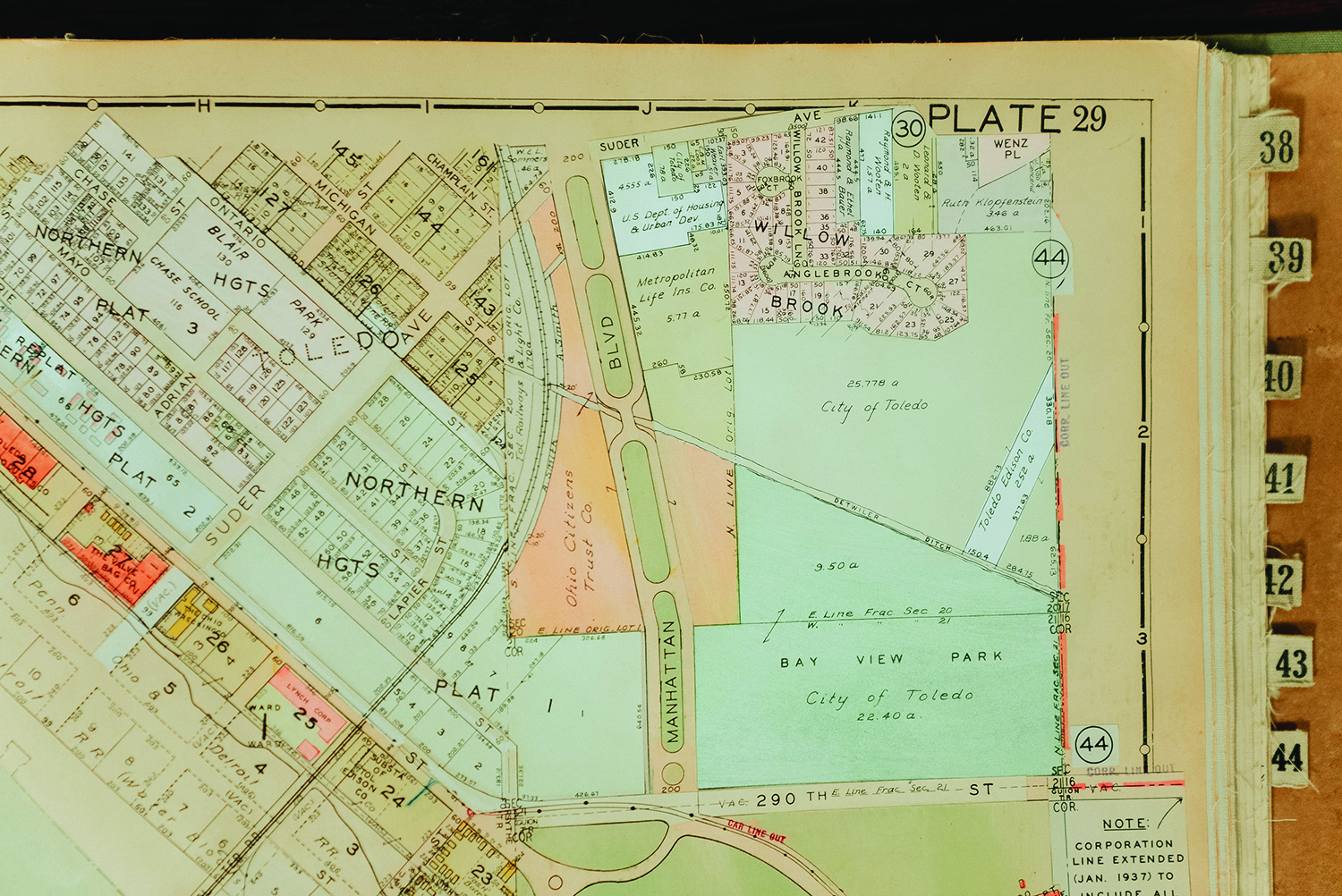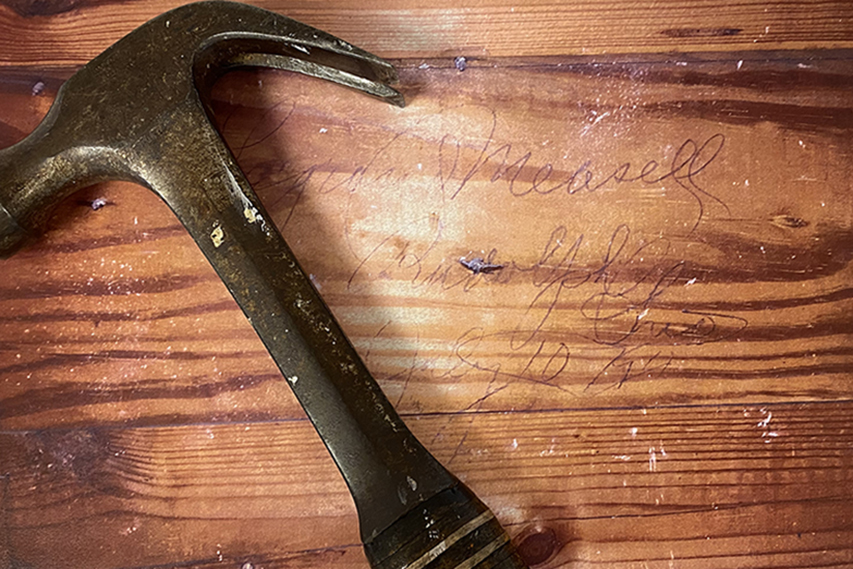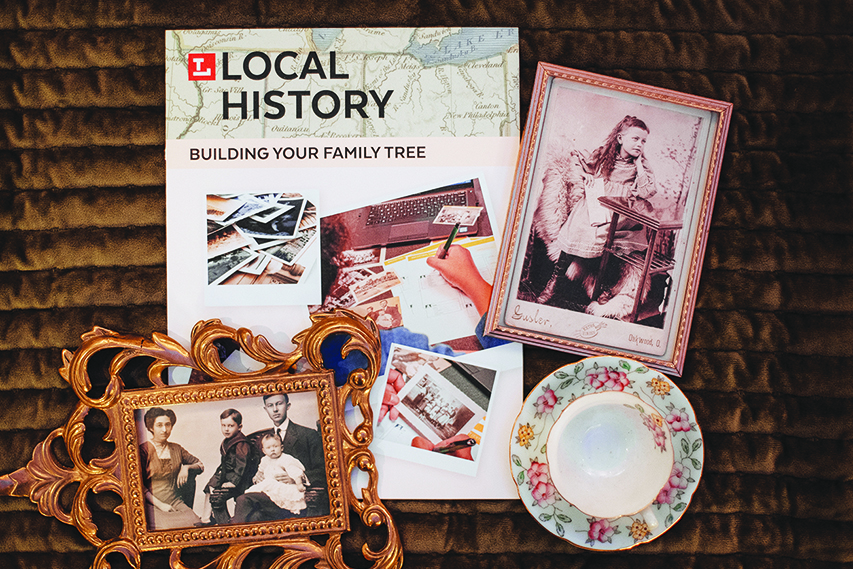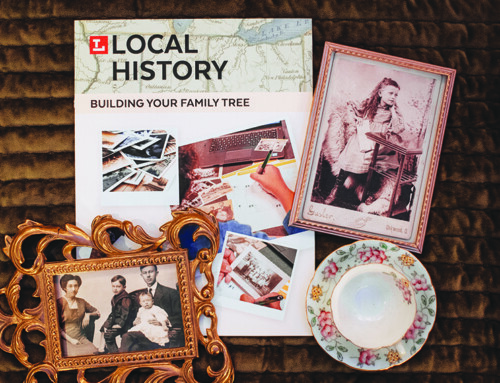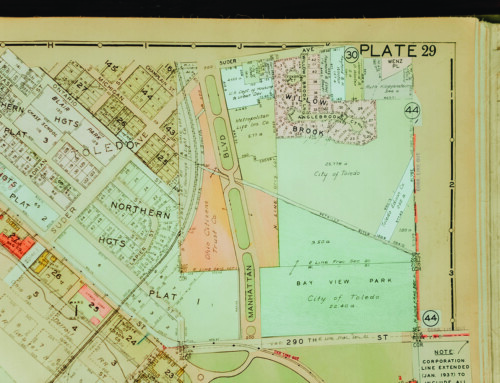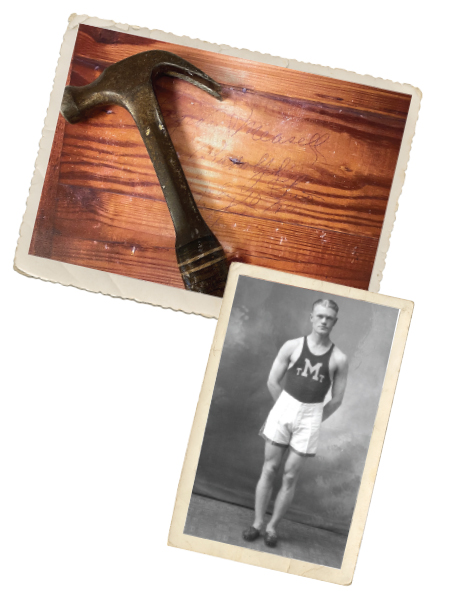
MY OLD HOUSE
By Nancy Eames, Youth Services Coordinator
I found the first signatures and messages while stripping wallpaper just a few years after buying my house. I fell in love with the craftsman-style built-ins and loved the unpainted oak woodwork in my home, but the wallpaper was everywhere! Even on the ceilings. Nearly all of it had been applied to unpainted plaster, and it took a few years and a lot of elbow grease to remove it. I found old signatures under the paper, added my own signature, and took pictures of all the messages.
Fast forward to 2017, when I did a complete kitchen/bath/laundry room remodel. We took everything down to the studs and discovered layers of old pink and green paint in the kitchen. Between the studs in the bathroom, which was originally a butler’s pantry, we discovered a beautiful signature and date: Legrand J. Measell, July 20, 1917, Rudolph, Ohio.
I was excited about both the name and the date. The deed to my home simply said “older,” and the auditor’s office said it was built in 1900. But the style of the woodwork seemed a bit newer, and so, like Alice, I jumped down the “rabbit hole” and began my research.
I consulted our Local History and Genealogy Department for advice. With their help and resources, I was able to correctly date the age of my house and learn about the original and subsequent owners.
I started by researching conveyances. Using the auditor’s office database is a good way to find your lot number and other details, but you won’t find the full history of an older home. I went to the Wood County courthouse and looked through enormous books of conveyance records to find the history of my property. I learned that the first recorded purchase was in 1872 and that the person who built the house, John Mariner, bought the property for $2,500 in 1909.
Sanborn Maps were the next useful tool. By comparing the 1915 and 1925 maps, I was able to verify that my house did not exist in 1915, thus verifying the builder’s signature and 1917 date.
Then, I got curious about that signature in the butler’s pantry. Was it the builder’s name? I started with Google and learned that Legrand J. Measell attended Miami University and was born in August 1900. So, he was 16 years old when he signed his name. He must have been part of the construction crew. Was he the young man who lost a hammer (another treasure we discovered) between the wall studs? And what about the original owner John Mariner—who was he?
Ancestry.com was a wealth of information, including census records. I started building family trees for both the Mariners and the Measells. I liked knowing something about these people from 100 years ago and imagining them living in the space I now call home.
John (1863-1937) and Bridget Dunn Mariner (1864-1946) were the first owners of the house. They had one daughter, Irene May Mariner (1893-1958). Irene married Leon Cary. They lived in Detroit until Leon died at age 38. Irene moved back to Bowling Green with her three children, Lucy, William, and Dick. They lived in the house with Bridget until she died in 1946 and stayed until 1957, when Irene sold the house to Bill and Doris Mertz (whose signatures I found under the wallpaper.)
Lucy Cary and I share a birthday, so I spent more time following her life. I found her high school yearbook photos through Ohio Memory and used the TLCPL Obituary Index to discover that she died alone at age 55 in her Old West End apartment in 1981 after working for Lucas County Children’s Services for 24 years.
And Legrand Judson Measell? He played basketball at Miami University and then moved to the Akron area. He became a high school teacher and retired to Largo, Florida where he died in 1982.
It’s been quite a journey since I started stripping that old wallpaper, but it feels like instead of erasing the past with my changes, I instead have brought it to life and have connected the previous generations with my family that lives in the house today.

